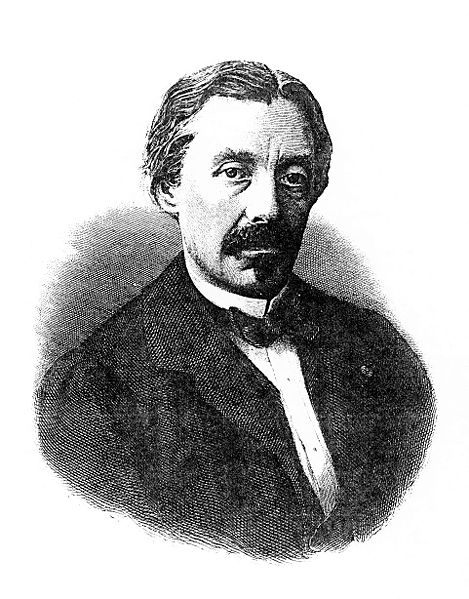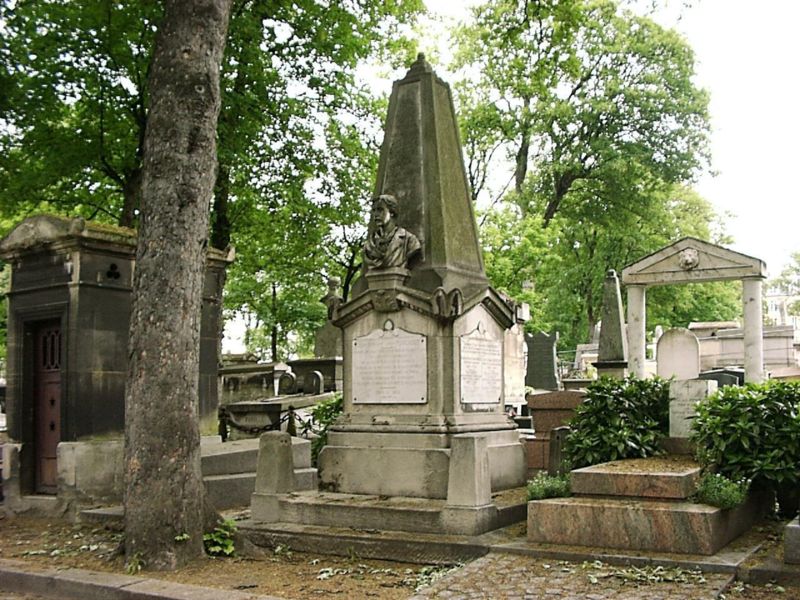<Back to Index>
- Physicist Jean Bernard Léon Foucault, 1819
- Composer Francesca Caccini, 1587
- 9th Prime Minister of Australia James Henry Scullin, 1876
PAGE SPONSOR


Jean Bernard Léon Foucault (18 September 1819 – 11 February 1868) was a French physicist best known for the invention of the Foucault pendulum, a device demonstrating the effect of the Earth's rotation. He also made an early measurement of the speed of light, discovered eddy currents, and although he did not invent it, is credited with naming the gyroscope. The Foucault crater on the Moon is named after him.
Foucault was the son of a publisher in Paris, where he was born on September 18, 1819. After an education received chiefly at home, he studied medicine, which he abandoned in favour of physics due to a fear of blood. He first directed his attention to the improvement of L.J.M. Daguerre's photographic processes. For three years he was experimental assistant to Alfred Donné (1801 – 1878) in his course of lectures on microscopic anatomy.
With A.H.L. Fizeau he carried out a series of investigations on the intensity of the light of the sun, as compared with that of carbon in the arc lamp, and of lime in the flame of the oxyhydrogen blowpipe; on the interference of infrared radiation, and of light rays differing greatly in lengths of path; and on the chromatic polarization of light. In 1850, he did an experiment using the Fizeau – Foucault apparatus to
measure the speed of light; it came to be known as the Foucault – Fizeau
experiment, and was viewed as "driving the last nail in the coffin" of Newton's corpuscle theory of light when it showed that light travels more slowly through water than through air. In 1851, he provided the first experimental demonstration of the rotation of the Earth on its axis (diurnal motion). This was achieved by considering the rotation of the plane of oscillation of a freely suspended, long and heavy pendulum in the Panthéon in Paris. The experiment caused a sensation in both the learned and popular worlds. In the following year he used (and named) the gyroscope as a conceptually simpler experimental proof. In 1855, he received the Copley Medal of the Royal Society for his 'very remarkable experimental researches'. Earlier in the same year he was made physicien (physicist) at the imperial observatory at Paris. In September, 1855, he discovered that the force required for the rotation of a copper disc becomes greater when it is made to rotate with its rim between the poles of a magnet, the disc at the same time becoming heated by the eddy current or "Foucault currents" induced in the metal. In
1857, Foucault invented the polarizer which bears his name, and in the
succeeding year devised a method of testing the mirror of a reflecting telescope to determine its shape. The so-called "Foucault Test"
allows the worker to tell if the mirror is perfectly spherical, or if
it deviates from a sphere. Prior to Foucault's invention, testing
reflecting telescope mirrors was a "hit or miss" proposition.
Foucault's test to determine the shape of a mirror measures the
distance from the mirror that various areas, or zones of the mirror
equidistant from the optical center of the mirror, focus light from a
point source reflected off of the mirror. The test, denominated the
"Foucault test" enables the tester to quantify the conic section of the
mirror, thereby allowing the tester to validate the actual shape of the
mirror, which is necessary to obtain optimal performance of the optical
system. The Foucault test is in use to this date, primarily by amateur
telescope makers as it is an inexpensive test that can be used without
incurring substantial expense to acquire testing equipment. With Charles Wheatstone’s revolving mirror he, in 1862, determined the speed of light to be 298,000 km/s (about 185,000 mi./s) — 10,000 km/s less than that obtained by previous experimenters and only 0.6% off the currently accepted value.
In that year, he was made a member of the Bureau des Longitudes and an officer of the Légion d'Honneur. In 1864 he was made a member of the Royal Society of London, and the next year a member of the mechanical section of the Institute. In 1865 his papers on a modification of Watt's
governor appeared, upon which he had for some time been experimenting
with a view to making its period of revolution constant, and on a new
apparatus for regulating the electric light; and in the year (Compt.
Rend. lxiii.) he showed how, by the deposition of a transparently thin
film of silver on
the outer side of the object glass of a telescope, the sun could be
viewed without injuring the eye. His chief scientific papers are to be
found in the Comptes Rendus, 1847 — 1869.
Foucault died of what was probably a rapidly developing case of multiple sclerosis on February 11, 1868 in Paris and was buried in the Cimetière de Montmartre.